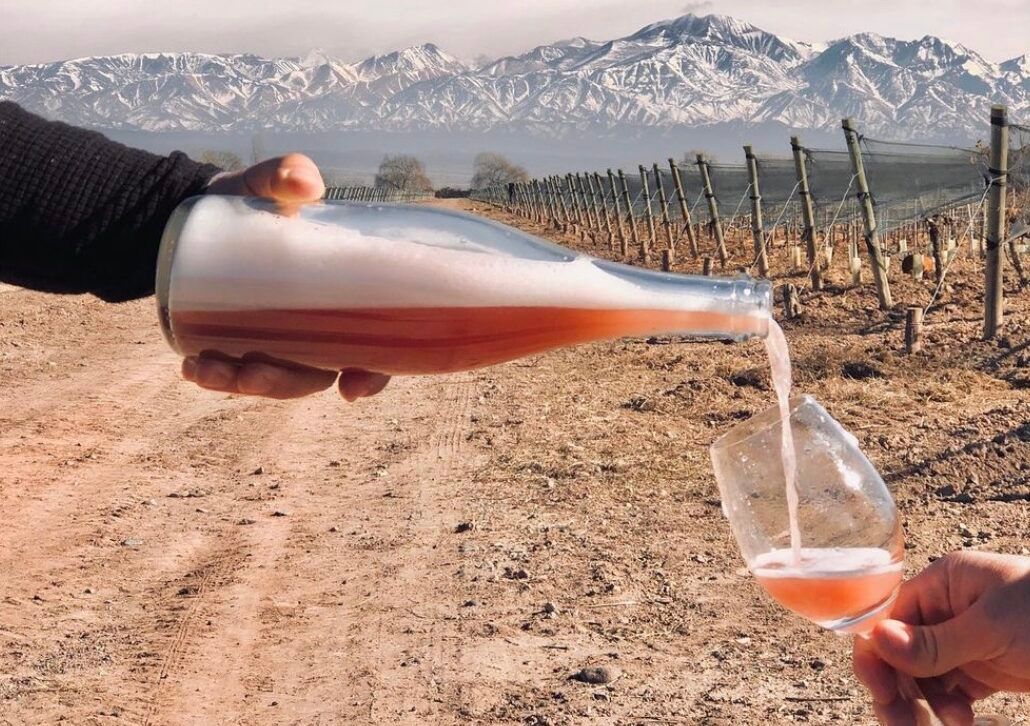Capturing the attention and imagination of wine drinkers in Argentina is now as important as opening up and expanding its export market, and is helping its producers make even better wine, says Sophia Longhi.
“It’s very difficult to put this wine on my dad’s table,” says Daniel Manzur, winemaker at Bodega El Bayeh, nodding at his see-through cherry-red Criollo Chica. It hasn’t been easy to launch a Criolla project to the traditional Malbec loyalists, he tells me, but his Criolla wines from Jujuy are making waves with a new generation of wine lovers, particularly with the young, open-minded sommeliers in Buenos Aires. His crunchy, rugged reds have caught the attention of the US too, with 50% of the total production heading there.
Perhaps for his dad, and others of the same ilk, there is a 100% Malbec wine in the El Bayeh range, Trópico Su Tinto. Vibrant, expressive, whole-cluster characteristics, with a lick of oak and a fine-but-firm tannic structure – this is the new style of Malbec sweeping across Argentina and out into the world.
With one foot in tradition and one foot in innovation, Manzur is not alone in providing a range of wines to suit the spectrum of palates in a changing Argentina.
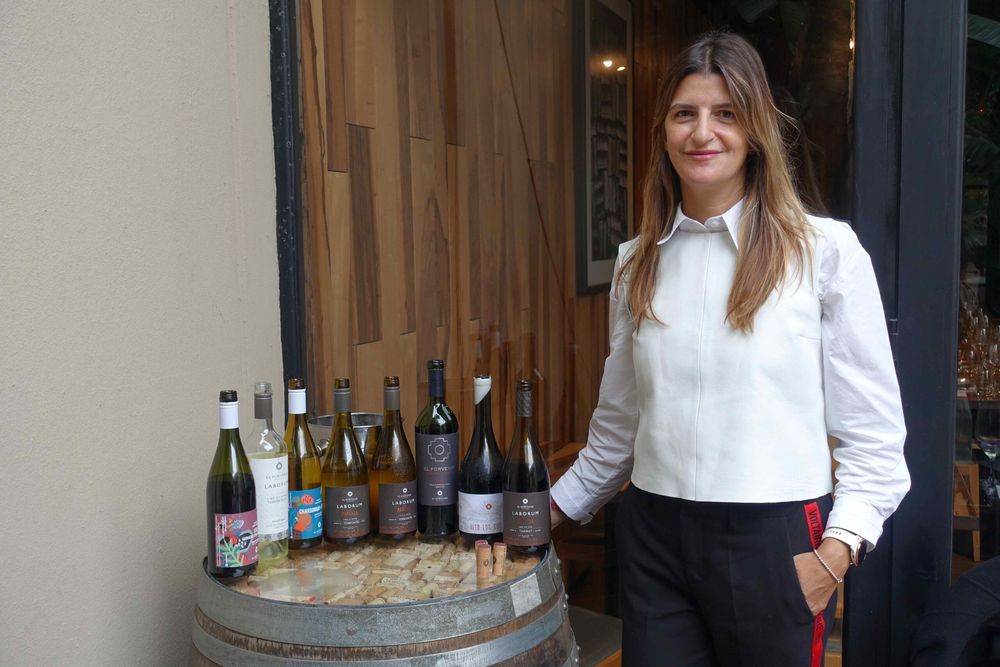
Lucia Romero of El Porvenir in Salta says it is key for the winery to have a strong domestic market as well as build up its exports
“The styles can live together,” says Lucia Romero of Salta winery, El Porvenir, as she shows me the Alto Los Cuises 2019 next to the El Porvenir 2018. The Alto Los Cuises, in its wax-sealed bottle, is “going towards the lighter, fresher style of Malbec”, while the “family icon”, El Porvenir, respects the powerful, ripe-fruited Malbec benchmark style that Argentina is renowned for.
Strong at home
“As a market, Argentina is very important for us,” explains Romero. “It’s 50% of our production: we sell our wines here and we never want to lose the presence here. We sell quite a lot in our region, Salta, too: everyone’s drinking local wine.”
The flourishing restaurant culture in Buenos Aires has also had a huge impact on the wines people are drinking and has led the way when it comes to changing trends and styles, she says.
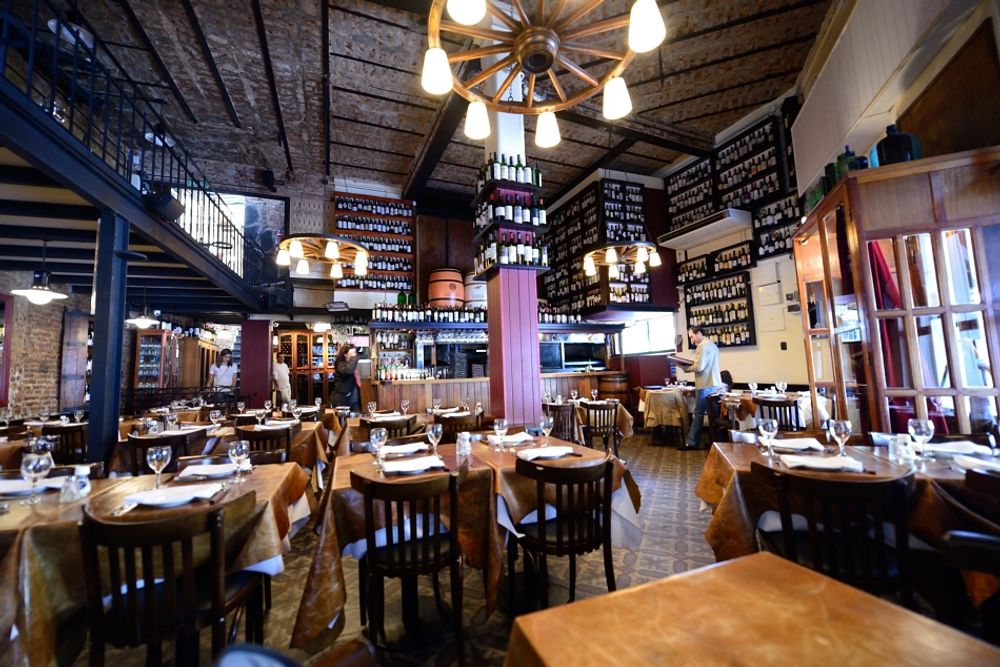
Don Julio in Buenos Aires is one of a number of Argentine restaurants to feature in the Top 50 Restaurants in the World and are helping to drive demand for premium Argentine wines to be sold in the city and across the country
“Gastronomy is booming. There’s a lot of great new restaurants and we’re seeing different cuisines, like sushi. Torrontés is something we sell very well here. When I started, there was no Torrontés on wine lists. It was old-fashioned – they had Chardonnay, but now they have Torrontés from many regions. There’s a couple of places that you go to because of the wine list – that’s a new thing. Plant-based restaurants are becoming more popular, too, and they are all looking for lighter wines, fresher wines. It’s nice to see the wine lists reflecting different types of food,” she explains.
Argentina might be opening its doors to the world, but this also means that retaining its own wine consumers is fundamental. Local sales in Argentina, for example, account for 25% of Otronia’s total production from its winery in Patagonia. Maximo Rocca, its commercial director, says: “Argentina is important for us. To be successful, you need to be successful in your market.”
Sebastian Zuccardi, of Zuccardi Valle de Uco, agrees: “As a family, we are committed to the local market.”
Key export markets
While it is honourable and necessary to keep high quality Argentinian wine in Argentina, nurturing export markets and international relationships has been crucial for Argentinian wineries, especially in recent times.

Juan Marco at Finca Decero in Mendoza says producers need to balance where they are selling their wine between protecting and growing the domestic market whilst building export sales too
Juan Marco, chief executive and director of viticulture and winemaking at Finca Decero in Mendoza, describes sales in Argentina this year as “a disaster” because of the “challenging and volatile situation with the economy”. Finca Decero exports between 97-98% of its total production, but Marco insists there is still a healthy domestic market for its premium wines. Even Bodegas Lopez, who, for over 120 years, never exported its wines, started shipping a portion of its wines out of the country four years ago.
The UK market remains a key export market and is on the wishlist for most wineries that don’t UK representation. “The UK is like a key to the world,” says Manzur from El Bayeh, a view shared by Martin Perez Cambet, marketing specialist for Bodegas Lopez, who adds: “The UK is the most developed country in the wine business. It can be very complicated, the most difficult one, however if you can get into the UK it can open doors to other markets, too, like India and China.”
Some wineries, like the organic and biodynamic Chakana in Lujan de Cuyo, Mendoza, suggest that a presence in the UK offers more freedom for them to make the wines they truly want to make. “People in the UK understand our wines”, says Leo Devia, Chakana winemaker.
For a masterclass in wine exporting, one only has to look at Argentine wine giant, Trapiche. “We are the main exporter of Argentina,” says Marisa Aquirre at Trapiche. Exporting to over 80 countries, Trapiche make 450 different wines, with 4,500 different labels – each tailored to specific markets, without compromising on the quality of the wine inside the bottle.

Trapiche is still blazing the way for Argentina around the world with wines in over 80 countries
During an extensive tasting, it was clear it had an intrinsic understanding of each market, too. The Trapiche ‘Pure’ range, directed towards the UK market, is a selection of approachable wines made with no oak – just pure, juicy, fruity grapes. The line for the American market, Tesoro, is bigger and bolder, with ripe, oak-laced, full-malo wines. Though all the ranges have their own identity, Aquirre says they are still made by the same team and are “strongly connected by a signature style”.
Retaining some kind of hallmark whilst adapting flavour and taste profiles to different markets can, of course, bring challenges of its own.
“Year by year we work hard to keep to identity of the range,” says Silvio Alberto, chief winemaker at Bodegas Bianchi in Mendoza. “We have to communicate this clearly.”
Personal marketing
The likes of Trapiche, Zuccardi and Catena Zapata have long secured spots in restaurants and specialist shops, as well as on our supermarket shelves, but the smaller wineries (or the niche wines) rely on hand-selling by sommeliers and face-to-face tasting opportunities.

Maximo Rocca from Otronia which specialises in high end Chardonnay
“The restaurant is important for us,” says Maximo Rocca from Otronia, home of Argentina’s most highly-awarded Chardonnay. “There is a lot of work by the glass that importers are doing to make people taste the wines.”
Other wineries, like Finca Decero, have not underestimated the power of getting their wines into people’s hands and have praised the opportunities that wine tourism has brought in. “Tourism is one third of our income now,” says Juan Marco from Finca Decero, “a few years ago it was just around 5%.”
Tourists flocking over the border from Brazil have played a huge part in this boom and Argentine wineries are looking after this expanding, affluent market carefully. “The DTC business with Brazil is growing,” says Marco, “and we’re looking to launch a wine club in Brazil.”
Traditional methods of marketing, such as adverts in magazines, aren’t favoured by the likes of Finca Decero, who say the “biggest challenge is the competition when marketing, because you’re competing with the world and the consumers are exposed to many, many quality wines.”
Face-to-face
Instead, they prefer to be face-to-face, and when they are not bringing consumers to them in Mendoza, they are spending time on the ground in their most important markets. “We’re spending 120 days in the US this year at live events and trade shows,” says Marco.
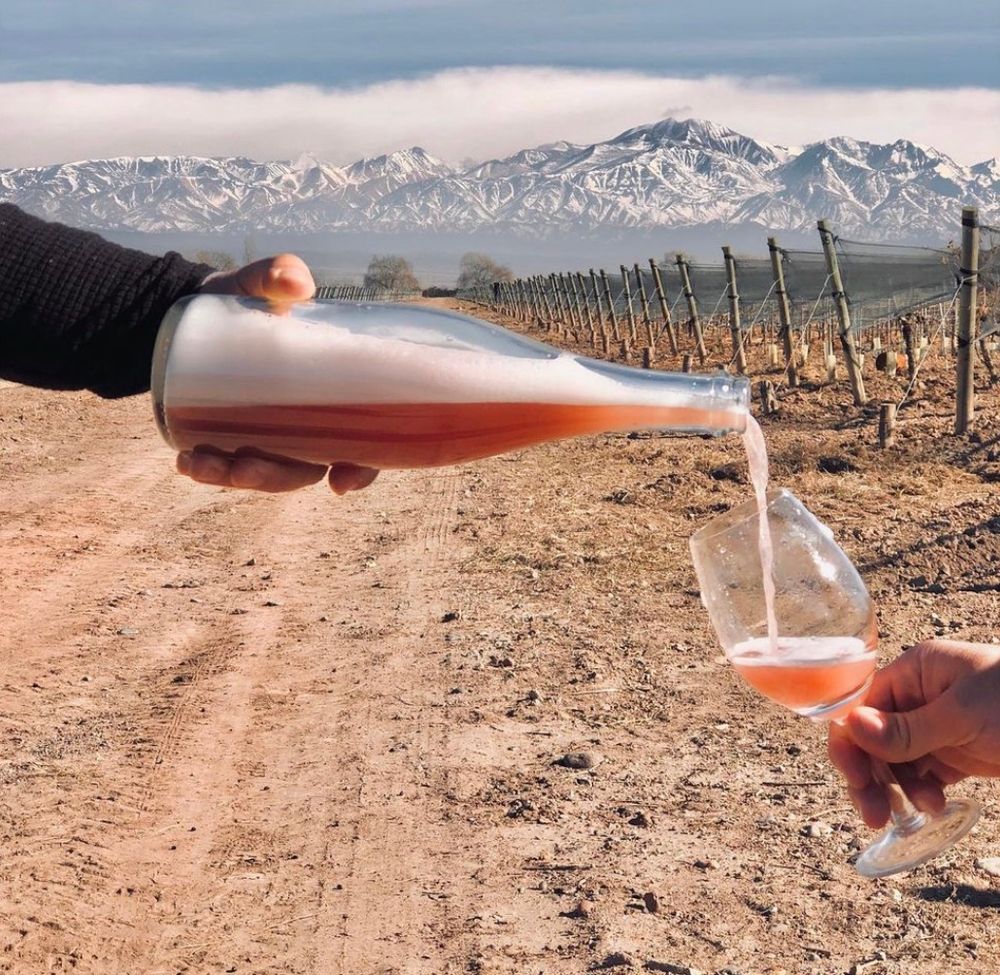
Argentine wineries are using social media to get their unique messages across – like Chakana and this Instagram image to showcase its Pet Nat style made from Tannat, Syrah and Cabernet Sauvignon.
Some wineries, like Chakana, are embracing social media, seeing “the value of people who talk about wine in different situations, even influencers who work in a different area to wine”.
Marisa Aquirre from Trapiche agrees. “People communicating about wines nowadays can be way more flexible,” says. “As a sommelier, I can give you a suggestion about temperature, a pairing, but the best pairing is the one you enjoy.”
Trapiche is also working hard to appeal to a younger crowd, after building their outdoor railway “shack”, where revellers can come to hang out and drink “fresh, unbaked” Trapiche wines on draft.
Trends to enjoy: fresh reds and serious whites
The big, heavy, velvety Malbecs are still there if that’s what you’re after, but, along with the rest of the world, the winemaking trends in Argentina are leaning towards lighter, fresher styles of wine, which celebrate purity of fruit and the character of the terroir. Any accusations of oak being used to mask poor quality grapes have fallen by the wayside, as stainless steel, concrete and even amphora (see Bianchi) are being favoured in the winery. Where oak is used, it’s often in a restrained way, with lightly-toasted, second-use or large barrels.
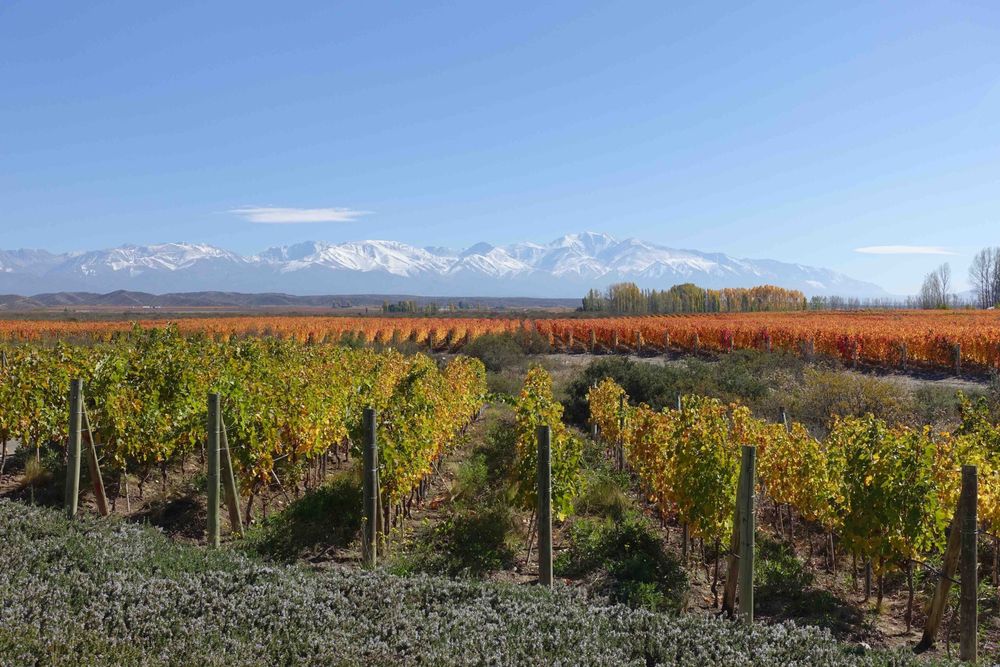
Producers across Argentina are looking to make lighter alcohol wines whilst raising their quality and consistency
Silvio Alberto from Bianchi suggests it was the consumer who led the way. “The consumer changed; we also. In 2018, we went from muscular to supple.”
The story is the same for Bodega Escorihuela Gascón: “The consumer was asking for higher quality,” says technical director, Matías Ciciani Soler. It looked to raise the standard of its entire range and rendered the lower-end wines redundant. “We killed the entry level five years ago.”
Leo Devia from Chakana suggests its consumers are drinking less but better. “Before, wine was on the table every day. Now, it’s two to three times a week, but it’s better wine.”
The move away from the robust, rustic reds to the fresher styles might have paved the way for white wines to be taken more seriously in Argentina, too. Otronia’s 3 & 6 Chardonnay is widely regarded in wine circles as a star wine of Argentina, with South American wine critic and writer, Amanda Barnes, describing it as “one of [her] top Chardonnay’s in Latin America”. The Catena Zapata White Bones Chardonnay 2020 came in at number 2 (behind a Malbec) in James Suckling’s Top 100 Wines of Argentina 2022 and Tim Atkin MW also noted in his 2022 Argentina Report that Argentina’s white wines “now rank among the New World’s very best”.

Winemaking in the wild landscape of Patagonia is helping to bring high end, classic styles of white wines in particular to the market – like Otroni’s 3 & 6 Chardonnay (available through Bibendum)
“It’s aspirational to have a Chardonnay at a winery,” says Marisa Aquirre from Trapiche. The top Chardonnay wines often have a stony, flinty quality to them, with a mouthwatering acidity underpinning generous, fleshy fruit. Malolactic fermentation is used with precision, creating an opulent mouthfeel, but with balance.
Terroir-driven wines
“If we want to be precise, we need to talk about the villages within the Uco Valley.” This is Sebastián Zuccardi beginning to explain the concept of terroir and his quest to understand more about the Zuccardi vineyards, an exploration that has completely revolutionised the way they plant vines and grow grapes.

Sebastián Zuccardi is following in his father’s footsteps to make wines that have a real sense of place and put terroir first
“Today, we are no longer a vineyard with blocks; we are a vineyard with parcels.” Before we even get a sniff of the wines, Zuccardi presents to us the climatic and geological aspects of the different parcels, after which we might begin to grasp the character of each wine.
Zuccardi is not the only winery emphasising the impact of terroir and talking about how it influences their wines. Juan Pablo Murgia, techinal director at Bodegas Argento, presents his range of wines vineyard by vineyard, plot by plot. “This is the modern winemaking concept,” says Murgia. “This is where it’s going, knowing the place you have.”
Longer, lower and lighter
For Finca Decero, among its trends are aged Malbecs, lower alcohol wines and lighter bottles, which Decero have been working on since 2007.
“I have tried many Argentinian wines over the years and have seen that Argentinian Malbec has the potential to age with grace,” says Juan Marco. “The idea is to position Argentina as a key player in the market as a producer of wines that can age.”
In regards to lowering the alcohol in wines, this is something that Finca Decero have been experimenting with for a while, but it is a work in progress. “We are seeing if we can reduce the alcohol naturally in fermentation, but at the moment when we decrease it, we are losing flavour.”
It would seem that ‘unconventional’ is the new oak. Many wineries are looking for new locations to open wineries, moving further and further to the cooler south (Trapiche, for example, is starting a new project in Patagonia). Experimentations with different grape varieties is also en vogue. Bira Wines was inspired by a Malvasia its team tasted in Sexy Fish in Mayfair, and have made its name by planting Italian grape varieties in the Uco Valley, citing the open mindedness of new wine drinkers as the reason for their popularity.
“The younger generation embraces everything,” it says. And, it would seem, so does the new Argentina.
Wineries to follow
Here are the social media and Instagram links for the wineries featured in the article.
Otronia @otroniapatagoniaextrema
El Porvenir @elporvenirwines
Pyros @pyroswines
Bodega El Bayeh @bodegaelbayeh
Finca Decero @fincadecero
Chakana @chakanawines
Catena Zapata @catenawines
Trapiche @trapichewines
Zuccardi @ZuccardiValleDeUco
Bemberg @bembergwines
Bira Wines @birawines
Bodega Argento @bodegaargento
Escorihuela Gascón @escorihuelag
Bodegas Lopez @bodegaslopez
Bodegas Salentein @salenteinbodega
- You can read more of Sophia Longhi’s work at her website Skinandpulp.com.
